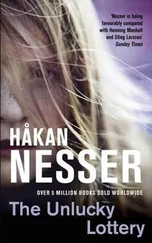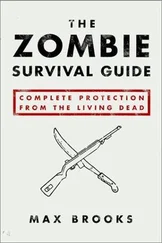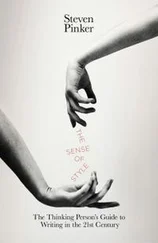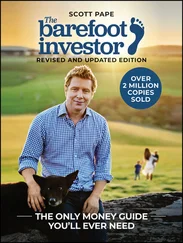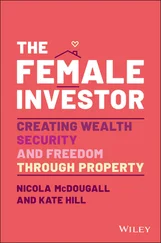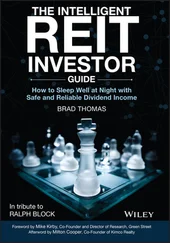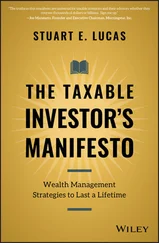117 107
118 108
119 109
120 110
121 111
122 112
123 113
124 114
125 115
126 116
127 117
128 118
129 119
130 120
131 121
132 122
133 123
134 124
135 125
136 126
137 127
138 128
139 129
140 130
141 131
142 133
143 134
144 135
145 136
146 137
147 138
148 139
149 140
150 141
151 142
152 143
153 144
154 145
155 146
156 147
157 148
158 149
159 150
160 151
161 152
162 153
163 154
164 155
165 156
166 157
167 158
168 159
169 160
170 161
171 163
172 164
173 165
174 166
175 167
176 168
177 169
178 170
179 171
180 172
181 173
182 174
183 175
184 177
185 178
186 179
187 180
188 181
189 182
190 183
191 184
192 185
193 186
194 187
195 188
196 189
197 190
198 191
199 192
200 193
201 195
202 196
203 197
204 198
205 199
206 200
207 201
208 202
209 203
210 204
211 205
212 206
213 207
The Unlucky Investor’s Guide to Options Trading
Julia Spina
Coauthored by Anton Kulikov
Foreword by Tom Sosnoff

Copyright © 2022 by tastytrade, Inc. All rights reserved.
Published by John Wiley & Sons, Inc., Hoboken, New Jersey.
Published simultaneously in Canada.
No part of this publication may be reproduced, stored in a retrieval system, or transmitted in any form or by any means, electronic, mechanical, photocopying, recording, scanning, or otherwise, except as permitted under Section 107 or 108 of the 1976 United States Copyright Act, without either the prior written permission of the Publisher, or authorization through payment of the appropriate per‐copy fee to the Copyright Clearance Center, Inc., 222 Rosewood Drive, Danvers, MA 01923, (978) 750‐8400, fax (978) 750‐4470, or on the web at www.copyright.com. Requests to the Publisher for permission should be addressed to the Permissions Department, John Wiley & Sons, Inc., 111 River Street, Hoboken, NJ 07030, (201) 748‐6011, fax (201) 748‐6008, or online at http://www.wiley.com/go/permission.
Limit of Liability/Disclaimer of Warranty: While the publisher and author have used their best efforts in preparing this book, they make no representations or warranties with respect to the accuracy or completeness of the contents of this book and specifically disclaim any implied warranties of merchantability or fitness for a particular purpose. No warranty may be created or extended by sales representatives or written sales materials. The advice and strategies contained herein may not be suitable for your situation. You should consult with a professional where appropriate. Further, readers should be aware that websites listed in this work may have changed or disappeared between when this work was written and when it is read. Neither the publisher nor authors shall be liable for any loss of profit or any other commercial damages, including but not limited to special, incidental, consequential, or other damages.
For general information on our other products and services or for technical support, please contact our Customer Care Department within the United States at (800) 762‐2974, outside the United States at (317) 572‐3993 or fax (317) 572‐4002.
Wiley also publishes its books in a variety of electronic formats. Some content that appears in print may not be available in electronic formats. For more information about Wiley products, visit our web site at www.wiley.com.
Library of Congress Cataloging‐in‐Publication Data is Available:
ISBN 9781119882657 (Hardcover)
ISBN 9781119882671 (ePDF)
ISBN 9781119882664 (ePub)
Cover Design and Image: © Cassie Scroggins
Author Photos: © Garrett Roodbergen
To Beth, Ken, and Joe Spina, as well as all the smaller, fuzzier Spinas that have joined us along the way
The ace‐ace‐nine is an inside joke at tastytrade and quite possibly the most annoying way to lose a hand of blackjack. Blackjack, for those unfamiliar with gambling, is a game between a dealer and player where the objective is to get closest to 21 without exceeding it. Face cards are worth 10 and aces are worth either 1 or 11. Imagine being at a blackjack table sitting pretty with 20, and the dealer is showing an ace. They confirm they don't have blackjack, turn over their second card and show another ace. The round is basically won and done because the dealer has a terrible hand, totaling 2 or 12, against your 20. The dealer draws their third card and reveals a nine, and by the time you've done the math, the house has already taken your chips .
I've come a long way from my knuckle‐dragging pit trading days of the 1980s and 1990s. I take the wrapper off hot dogs when I eat them now, and I have also learned a few things about investing after 20 years of meeting people all over the country and teaching them how to trade. One crazy takeaway: Unlucky investors usually make the best traders. Why? Because anyone can get lucky and profit from a random investment, but in the small world of successful traders, the common denominator is quantitative skill. Another crazy takeaway: Anyone can learn these skills with access to the right information.
Way back when TD Ameritrade bought thinkorswim in 2009, I negotiated with every bit of leverage I had to personally keep the domain name, tastytrade.com. I had purchased the web address for $9.95 years earlier through GoDaddy, and I was convinced, just as I was with thinkorswim, that the name tastytrade would work. I have no idea why I loved tastytrade.com, but sometimes hunches just seem to work out. tastytrade's raison d'être was to fill the void in the financial media and offer up an untested, goodwill model built around raw, math‐based content. We've spent the last 10 years obsessively building client engagement by introducing complex financial strategies to retail investors. We still answer questions 24 hours a day and teach lessons from what we learned as market makers and software entrepreneurs: all for free. We truly are the guest who won't leave, but we believe that nonstop client engagement is core to motivating traders.
I have so many special memories from the last two decades, but one of my favorites was a strange trading story from an early 2001 trip to the desert. It was the first time we did a live trading show in Las Vegas, and a big trader at the event asked me how long it would take to get a fill on a large order using our platform. When I asked for his order, the client told me he wanted 10,000 spreads. This was before electronic spread executions existed, and I figured he was bullshitting me. But, as a show of good faith (and because I didn't want to back down), I told him we'd fill the order within one second. The client was convinced it wasn't going to happen, so I was pretty pleased when I told him, hand signal and all, that his order was filled in less than a second and the price improved by a nickel. We made asses of ourselves, but this is how it all began. Over the years, we continued to form unbreakable relationships with hundreds of thousands of amazing friends, traders, and investors. We gambled together, ate dinner together, had drinks at the bar, laughed when we made money, and cried when we lost money. We told jokes, embarrassed ourselves, humbled each other, and tortured our friends. We focused on building those relationships not only because it was a blast but because we also really saw how it motivated people to learn how to trade and participate in the market. It was key to the success of thinkorswim, and it inspired the founding of tastytrade.
Читать дальше



